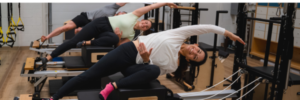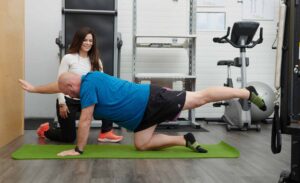We are at that time of year again when ski swaps are advertised and people are starting to think about getting new gear for the season. New skis, a new jacket but what about a new brace? A brace can help lower the risk of reinjuring a previously rehabbed injury or prevent a new injury from occurring. A brace can also give you that piece of mind to know that you have a bit more protection than just the strength of your knee itself. But how do you know if a knee brace is an appropriate option? Or how can you tell if it is time to replace (or repair) your current knee brace? Here are our top 3 tips (and tricks) to enhance your stability on the slopes.
1. Start with a consultation with a knowledgeable professional
Not only will a healthcare professional be able to educate you on the injury, provide in-depth treatment options and be able to help point you in the best direction. But they will also provide a ‘baseline’ for where your general strengths and weaknesses are to reference later into the season.
At Orthoquest, we offer complimentary bracing consultations in order to provide the highest level of care for our clients.
2. Find the brace that best fits your knee and injury
There is no good, better or best brace. Whether it be a framed custom brace or an over-the-counter brace, you want a brace that will give you the support you need, a brace you feel confident in. A custom framed brace will offer the most support, and stability. It has a better chance of withstanding a ski “yardsale” and protecting your knee than an over the counter sleeve brace. An over-the-counter brace will be less bulky but offer a bit less support.
3. Size matter
A brace needs to fit your quad and calf properly. If one part of the brace is too big or too small, you might not be getting enough support. If a brace is too big; the points of contact won’t give you the support you need in the right areas. If a brace is too small; then you add extra tension to the hinges or material causing an increase in wear and tear. A brace should fit like a pair of socks; snug, aware of it on your body – but not so tight that it cuts off circulation.
Tip: If your brace is sliding down, it could be an issue with sizing. If the fit is not the issue, the sliding may be caused by the tension on the quad straps. If the straps at the top of the brace are being tightened too much, it will compress the quad muscle smaller causing a path of least resistance and the brace will slip. The calf straps are the anchor for the brace. These straps should be the tightest out of all the straps.
The brace that is right for you all depends on the activity level or ski level and the shape of your knee. Braces are made to fit your knee, not the other way around. If you are curious to learn more about bracing options for the upcoming ski season, book a complimentary brace consultation and let our team help you Move Well, Be Well.




